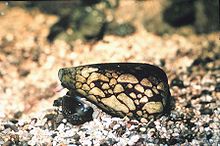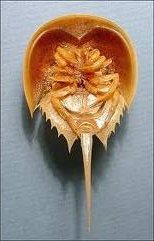What is truly amazing about Tetrodotoxin is that it is not produced by poisonous animals themselves but by bacteria they host. Here is a small sample of the animals that use this powerful neurotoxin
Tetrodotoxin
Using Animals and the some bacteria that produce it
|
Rough-skinned_newt
|
 Harlequin
Frogs
|
 Marbled cone snail |
 |
 Toad (Atelopus) |
 Moon Snail
|
 Ocean Sunfish |
 Blue Ringed
Octopus
|
 Pufferfish (fugu) |
 Horseshoe Crab |
 |
Sea Star (Astropecten polyacanthus) |
 |
 Pseudomonas |
 xanthid crabs |
 Parrot fish |
Some other Observations or Questions to think about or look out for:
Many of these animals on this page are associated with coral reefs Corals too have a chemical defense system
The world of microbes seems to be reflected in our world. They appear to have most of the weapons and strategies used by multicellular animals, even going as far as using poison tipped swords.Read for instance: Mortal Chemical Combat Typifies the World of Bacteria.
Bright colors in the microbial world also seem to indicate toxins. There is an old French heuristic that says if you see a mold growing on your bread or cheese that is kind of grey or light blue it is still okay to eat. However, anything that is bright red, orange, green is to be avoided
What do these animals eat?
Is Tetrodotoxin used to capture prey, as a defense against predation,or both?
How do they fit in their ecosystems?
Where do these animals live or where is their range? As I said many are tropical but the horseshoe crab is found off the coast of New England where I grew up.
Why are the ovaries of the fugu so toxic?
What happens during the mating period of the fugu and why?
How do the crown-of-thorn starfish and xanthid crabs interact?
Xanthid crabs and the blue ring octopus?
(as this exercise progresses I will add more questions)
The crucial question that all of these examples raises is How universal is this practice of using bacteria to produced poisons or even other complex chemicals by multicellular animals and plants? This is further treated in the webquest Poisonous Animals